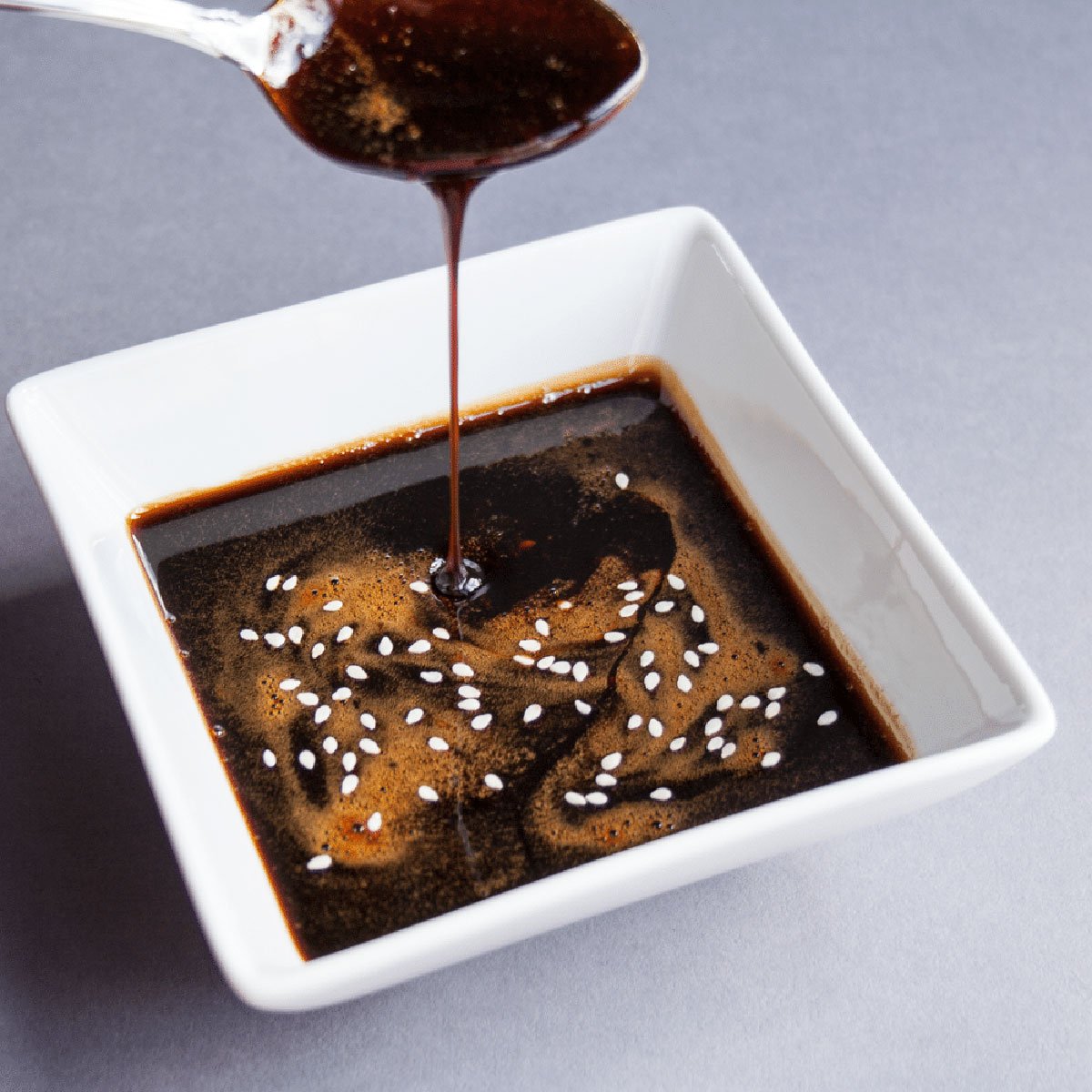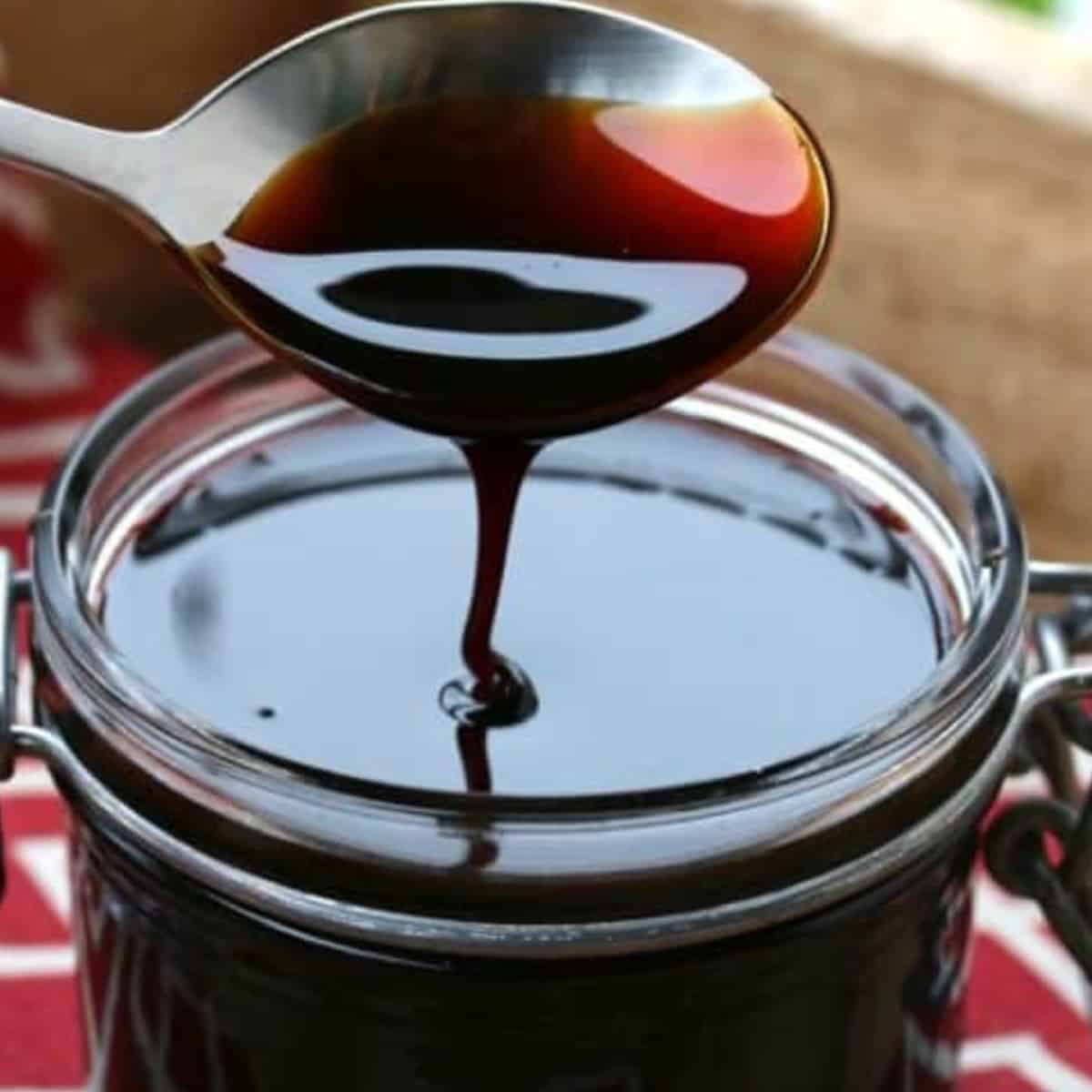Kecap manis
ketjap manis, sweet soy sauce
Sweet soy sauce is a sweetened aromatic soy sauce, originating in Indonesia, which has a darker color, a viscous syrupy consistency, and a molasses-like flavor due to the generous addition of palm sugar or jaggery. Kecap manis is widely used with satay. It is similar to, though finer in flavor than, Chinese Tianmian sauce (tianmianjiang). It is by far the most popular type of soy sauce employed in Indonesian cuisine and accounts for an estimated 90 percent of the nation's total soy sauce production. Compared to kecap asin, the mildly salty regular soy sauce, the sweet soy sauce has a slightly thicker consistency and tastes much sweeter. This condiment is made from a fermented paste of boiled black soybeans, roasted grain, salt, water, and Aspergillus wentii mold, to which palm sugar is added. The strong sweet taste is contributed by a generous amount of palm sugar — the sauce may contain up to 50 percent gula merah or gula jawa (palm sugar jaggery). Indonesian sweet soy sauce is often enriched with spices, including star anise, cinnamon, black pepper, coriander, and clove. Kecap manis is an essential sauce in the Indonesian pantry. It is used to add a pleasantly mild sweet and umami flavor to most popular Indonesian dishes, including nasi goreng, mie goreng, kwetiau goreng, ayam kecap (roasted chicken), babi kecap (braised pork), semur beef stew, and ketoprak. It is also a popular marinade for grilled dishes, such as satay, ayam bakar (grilled chicken), and ikan bakar (grilled fish). Sweet soy sauce is also a popular dipping sauce, mixed with chopped shallot and bird's eye chili and served as a dipping sauce for tahu goreng (fried tofu). Steamed rice topped with fried egg and drizzled with sweet soy sauce was a popular meal among Indonesians in the 1990s and 2000s, especially children. In Eastern Indonesia, sweet soy sauce is used as the ingredient of colo-colo dipping sauce, although traditionally this Maluku sauce uses black-colored rendered coconut oil residue.
Source: Wikipedia


:max_bytes(150000):strip_icc()/2116733-kecap-manis-sweet-soy-sauce-Atena-4x3-1-823710b8579d4235a2a41993f8aa8d39.jpg)

:max_bytes(150000):strip_icc()/__opt__aboutcom__coeus__resources__content_migration__serious_eats__seriouseats.com__2019__06__20190604-nasi-goreng-fried-rice-vicky-wasik-5-41be8ed09afc4e9fa1a695bcca03026d.jpg)
